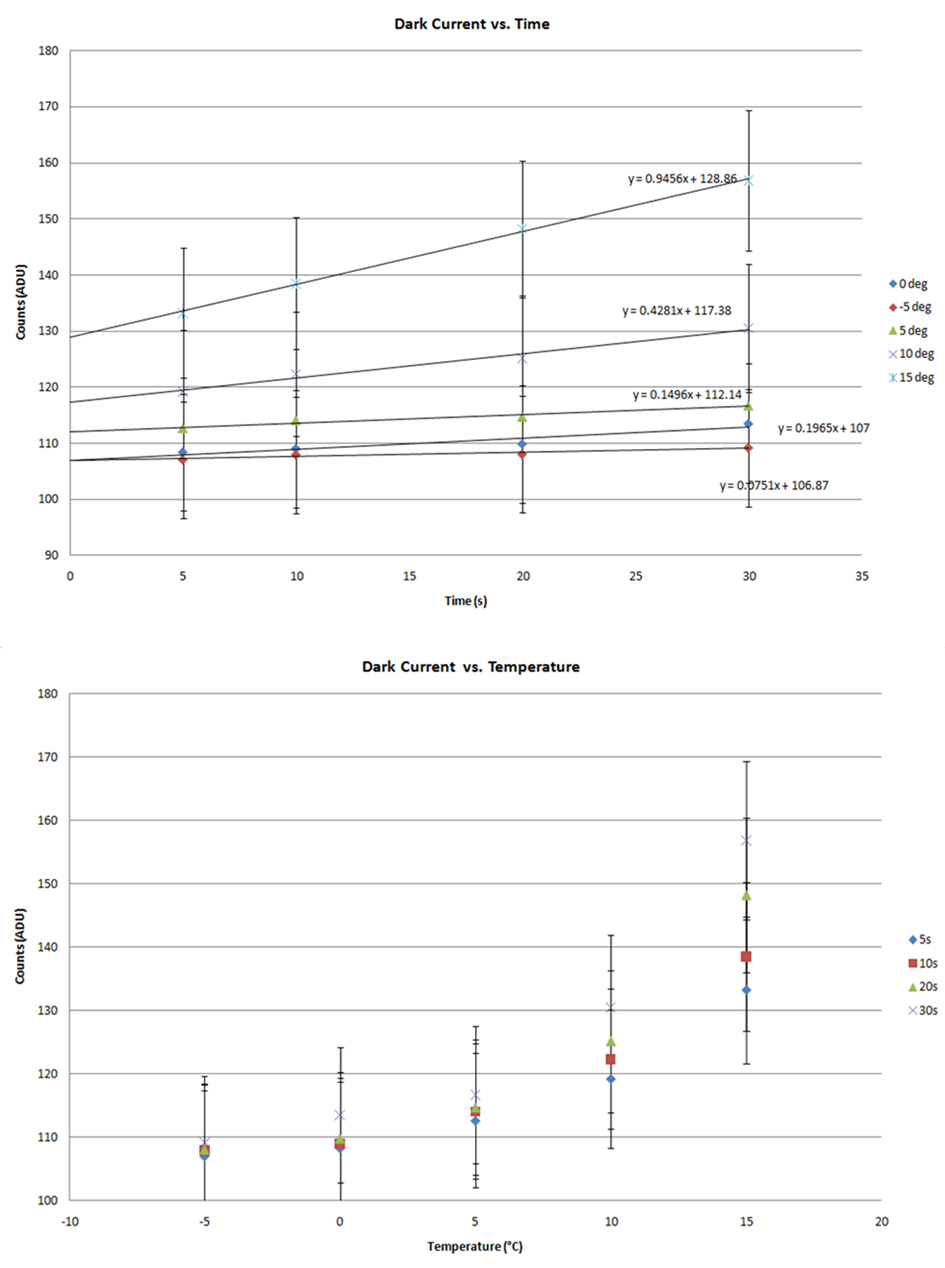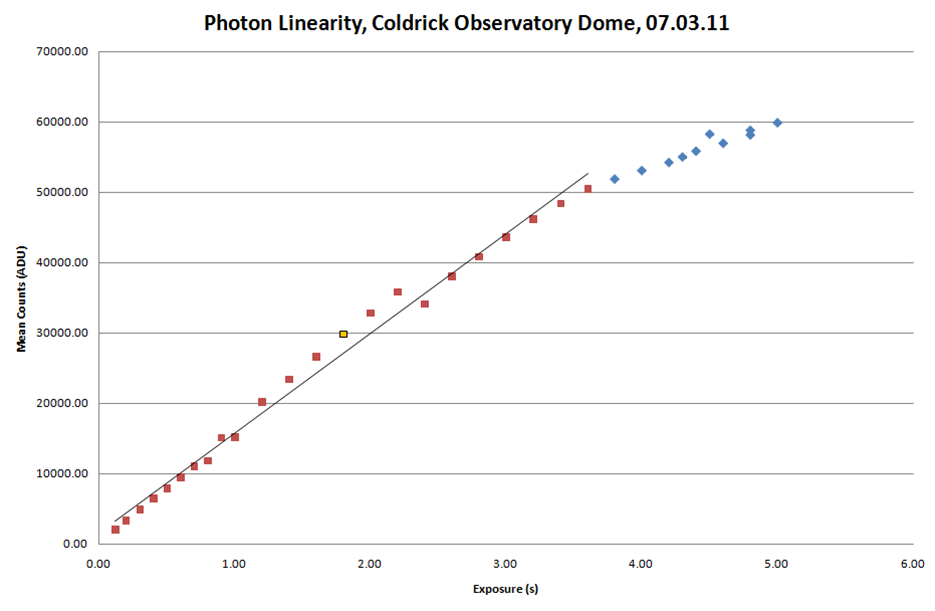CCD linearity calibration in an important part of the CCD calibration process. It informs a user how a CCD imagaging device will respond to various lighting conditions and operating temperatures. CCD linearity calibration needs only to be performed at the preliminary calibration stage.
Providing the resonse of the CCD imaging device is well understood as a result of this calibration, no further calibration needs to be made. CCD linearity calibration is particularly useful since it dictates which parameers should be adhered to when taking astronomical images using the device.
It was found during the 2010-11 BSc Project that the Coldrick ST-7E CCD device is linear with both dark current and incident photon counts. This linear relationship follows up until approximately 50,000 Analogue-to-Digital Unit (ADU) counts after which the function tends away from a linear relationship, as depicted in Fig. 2.
If a linear relationship does not exist between ADU counts and exposure time, accurate photometry cannot be conducted on resulting images using a CCD device. Therefore, during the 2010-11 BSc Project all astronomical data taken during observing sessions and used for further data analysis contained no greater than 45,000 ADU counts per pixel to ensure the linear relationship between ADU counts and intensity of incident photons was maintained.
The relationship between ADU counts and CCD operating temperature for the Coldrick ST-7E CCD device follows an exponential curve for both dark current and incident photons, highlighting the importance of selecting a low operating temperature to reduce the thermal noise (dark current) in images obtained by the device.

